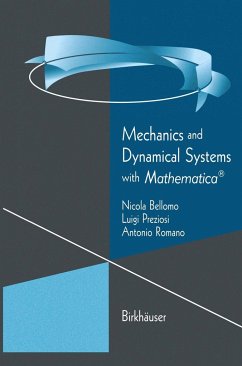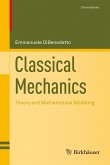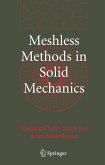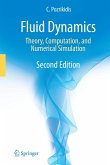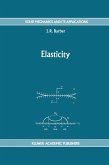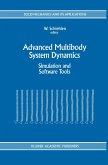Modeling and Applied Mathematics Modeling the behavior of real physical systems by suitable evolution equa tions is a relevant, maybe the fundamental, aspect of the interactions be tween mathematics and applied sciences. Modeling is, however, only the first step toward the mathematical description and simulation of systems belonging to real world. Indeed, once the evolution equation is proposed, one has to deal with mathematical problems and develop suitable simula tions to provide the description of the real system according to the model. Within this framework, one has an evolution equation and the re lated mathematical problems obtained by adding all necessary conditions for their solution. Then, a qualitative analysis should be developed: this means proof of existence of solutions and analysis of their qualitative be havior. Asymptotic analysis may include a detailed description of stability properties. Quantitative analysis, based upon the application ofsuitable methods and algorithms for the solution of problems, ends up with the simulation that is the representation of the dependent variable versus the independent one. The information obtained by the model has to be compared with those deriving from the experimental observation of the real system. This comparison may finally lead to the validation of the model followed by its application and, maybe, further generalization.
"The Mathematica notebook files are well written.... Most procedures are quite general and may be adapted to different models. The book covers a huge amount of ground... The nice thing about this book is the great variety of mathematical models treated." -Mathematical Reviews
"...Solid motivations are always given.... The book includes a great number of examples, taken from practice, many of them being worked out completely.... [It is] useful for practitioners and even mathematicians could find a lot of very interesting examples and motivations." -Mathematica, Revue d'Analyse Numerique et de Theorie de l'Approximation
"A distinguishing feature of this book's treatment of classical mechanics is the way in which it presents modeling, analysis and computation in a unified manner.... This text gives a surprisingly readable yet thorough account of classical mechanics and the use of Mathematica to aid the numerical and analytic solution of many standard problems. It is aimed at advanced undergraduate students and is, in fact, [a] very student-friendly text. There are many step-by-step descriptions of problem-solving methods that may be applied to broad classes of problems.... This book will be of great use to those struggling with advanced applications and concepts." -Scientific Computing World
"In this advanced undergraduate book on analytical mechanics, [the authors] develop enough of the theory of dynamical systems to provide an appropriate mathematical context for mechanics as well as useful analytical tools. They also provide Mathematica computer routines (available at the publisher's Web site) so the reader can visualize and experiment with the book's examples. This powerful combination of qualitative and quantitative tools allows for the analysis of a rich range of topics and material including some outside of mechanics.Still, the volume is fundamentally a textbook on classical mechanics and can be recommended as such, perhaps more than as a fundamental addition to a library collection." -Choice
"...Solid motivations are always given.... The book includes a great number of examples, taken from practice, many of them being worked out completely.... [It is] useful for practitioners and even mathematicians could find a lot of very interesting examples and motivations." -Mathematica, Revue d'Analyse Numerique et de Theorie de l'Approximation
"A distinguishing feature of this book's treatment of classical mechanics is the way in which it presents modeling, analysis and computation in a unified manner.... This text gives a surprisingly readable yet thorough account of classical mechanics and the use of Mathematica to aid the numerical and analytic solution of many standard problems. It is aimed at advanced undergraduate students and is, in fact, [a] very student-friendly text. There are many step-by-step descriptions of problem-solving methods that may be applied to broad classes of problems.... This book will be of great use to those struggling with advanced applications and concepts." -Scientific Computing World
"In this advanced undergraduate book on analytical mechanics, [the authors] develop enough of the theory of dynamical systems to provide an appropriate mathematical context for mechanics as well as useful analytical tools. They also provide Mathematica computer routines (available at the publisher's Web site) so the reader can visualize and experiment with the book's examples. This powerful combination of qualitative and quantitative tools allows for the analysis of a rich range of topics and material including some outside of mechanics.Still, the volume is fundamentally a textbook on classical mechanics and can be recommended as such, perhaps more than as a fundamental addition to a library collection." -Choice

